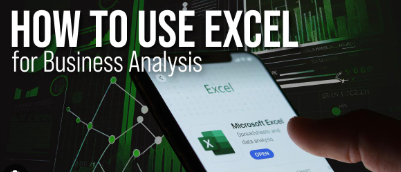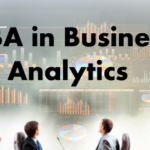What’s the DIFFerenCe betWeen a spreaDsheet anD a FInanCIal MoDel?
Let me make one thing very clear: I am not partial to the use of the word
spreadsheet; in fact, you’ll hardly find it used at all in this book.
I’ve often been asked the difference between the two, and there is a fine
line of definition between them. In a nutshell, an Excel spreadsheet is simply
the medium that we can use to create a financial model.
At the most basic level, a financial model that has been built in Excel is
simply a complex spreadsheet. By definition, a financial model is a structure
that contains input data and supplies outputs. By changing the input data,
we can test the results of these changes on the output results, and this sort of
sensitivity analysis is most easily done in an Excel spreadsheet.
One could argue then, that they are in fact the same thing; there is really
no difference between a spreadsheet and a financial model. Others question
if it really matters what we call them as long as they do the job. After all,
both involve putting data into Excel, organising it, formatting, adding some
formulas, and creating some usable output. There are, however, some subtle
differences to note:
- “Spreadsheet” is a catch‐all term for any type of information stored in
Excel, including a financial model. Therefore, a spreadsheet could really
be anything—a checklist, a raw data output from an accounting system,
a beautifully laid out management report, or a financial model used to
evaluate a new investment. - A financial model is more structured. A model contains a set of variable
assumptions, inputs, outputs, calculations, scenarios, and often includes
a set of standard financial forecasts such as a profit and loss, balance
sheet, and cash flow, which are based on those assumptions. - A financial model is dynamic. A model contains variable inputs, which,
when changed, impact the output results. A spreadsheet might be simply
a report that aggregates information from other sources and assembles
it into a useful presentation. It may contain a few formulas, such as
a total at the bottom of a list of expenses or average cash spent over
12 months, but the results will depend on direct inputs into those col
umns and rows. A financial model will always have built‐in flexibility to
explore different outcomes in all financial reports based on changing a
few key inputs. - A spreadsheet is usually static. Once a spreadsheet is complete, it often
becomes a stand‐alone report, and no further changes are made. A
financial model, on the other hand, will always allow a user to change
input variables and see the impact of these assumptions on the output. - A financial model will use relationships between several variables to
create the financial report, and changing any or all of them will affect
the output. For example, Revenue in Month 4 could be a result of Sales
Price × Quantity Sold Prior Month × Monthly Growth in Quantities
Sold. In this example, three factors come into play, and the end user can
explore different mixes of all three to see the results and decide which
reflects his or her business model best. - A spreadsheet shows actual historical data, whereas a financial model
contains hypothetical outcomes. A by‐product of a well‐built financial
model is that we can easily use it to perform scenario and sensitivi
ty analysis. This is an important outcome of a financial model. What
would happen if interest rates increase by half a basis point? How much
can we discount before we start making a loss?
In conclusion, a financial model is a complex type of spreadsheet,
whilst a spreadsheet is a tool that can fulfill a variety of purposes—
financial models being one. The list of attributes above can identify the
spreadsheet as a financial model, but in some cases, we really are talking
about the same thing. Take a look at the Excel files you are using. Are
they dynamic, structured, and flexible, or have you simply created a static,
direct‐input spreadsheet?
types anD purposes oF FInanCIal MoDels
Models in Excel can be built for virtually any purpose—financial and non
financial, business‐related or non‐business‐related—although the majority
of models will be financial and business‐related. The following are some
examples of models that do not capture financial information:
■ Risk management: A model that captures, tracks, and reports on project
risks, status, likelihood, impact, and mitigation. Conditional formatting
is often integrated to make a colorful, interactive report.
■ Project planning: Models may be built to monitor progress on projects,
including critical path schedules and even Gantt charts. (See the next
section in this chapter, “Tool Selection,” for an analysis of whether
Microsoft Project or Excel should be used for building this type of project
plan.)
■ Key performance indicators (KPIs) and benchmarking: Excel is the best
tool for pulling together KPI and metrics reporting. These sorts of statis
tics are often pulled from many different systems and sources, and Excel
is often the common denominator between different systems. - tool seleCtIon
- In this book we will use Excel exclusively, as that is most appropriate for the
- kind of financial analysis we are performing when creating financial models.
- We often hear it said that Excel is the “second‐best solution” to a problem.
- There is usually a better, more efficient piece of software that will also pro
- vide a solution, but we often default to the “Swiss army knife” of software,
- Excel, to get the job done. Why do many financial modelling analysts use
- Excel almost exclusively, when they know that better solutions exist? At
- Plum Solutions, our philosophy is also one of using only “plain‐vanilla” Ex
- cel, without relying on any other third‐party software, for several reasons:
- ■ No extra licences, costly implementation, or software download is required.
- ■ The software can be installed on almost any computer.
- ■ Little training is needed, as most users have some familiarity with the
- product—which means other people will be able to drive and under
- stand your model.

